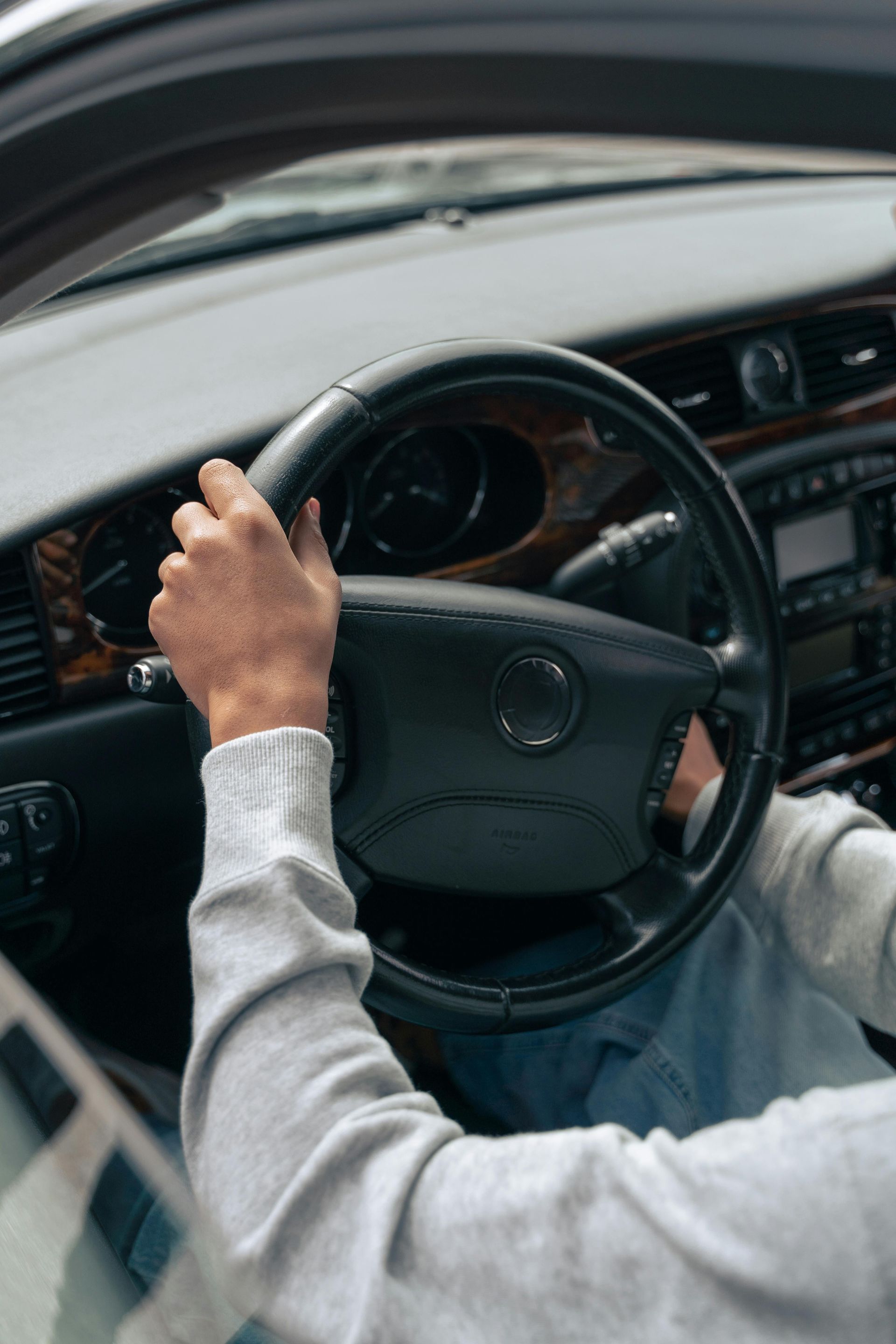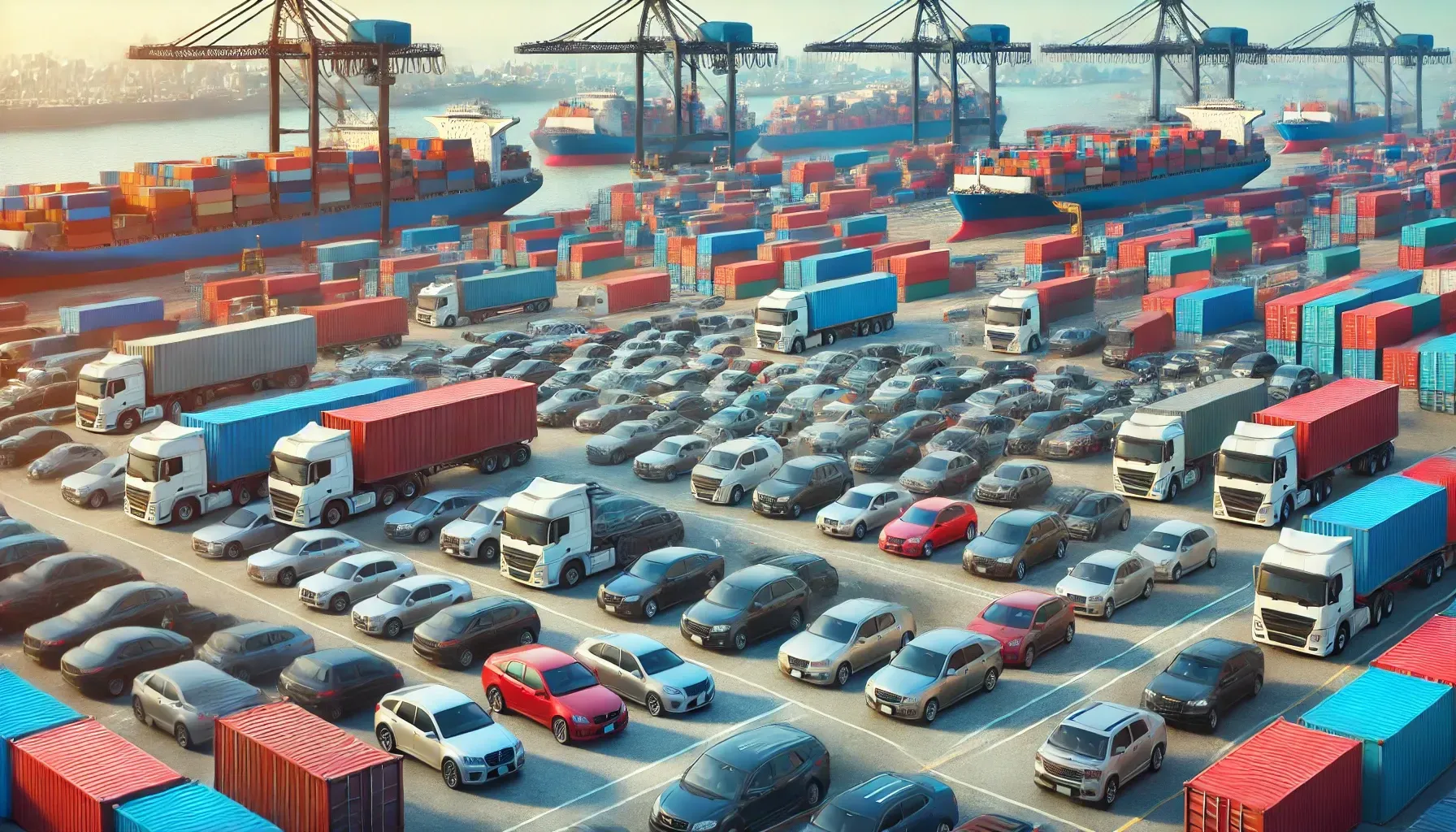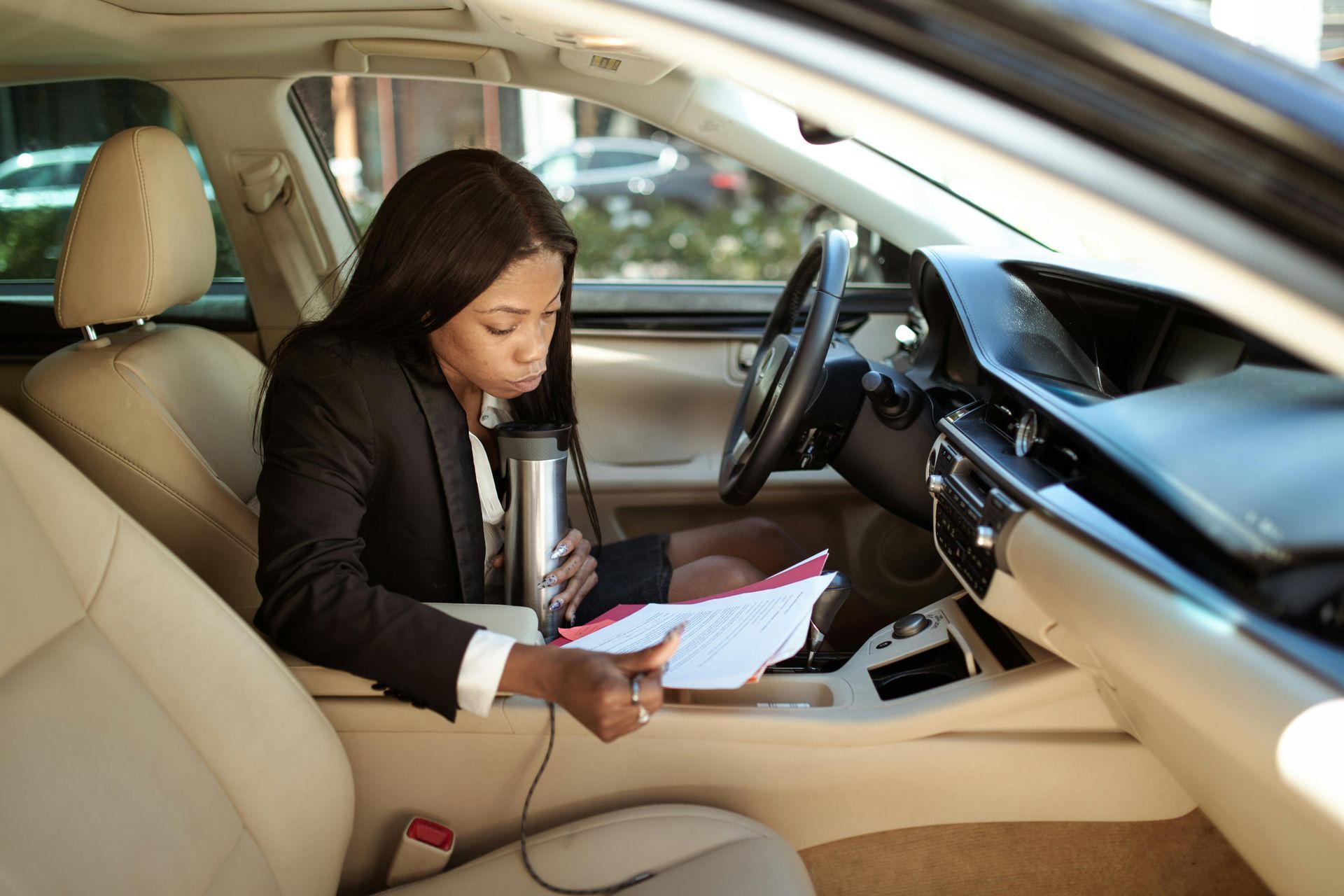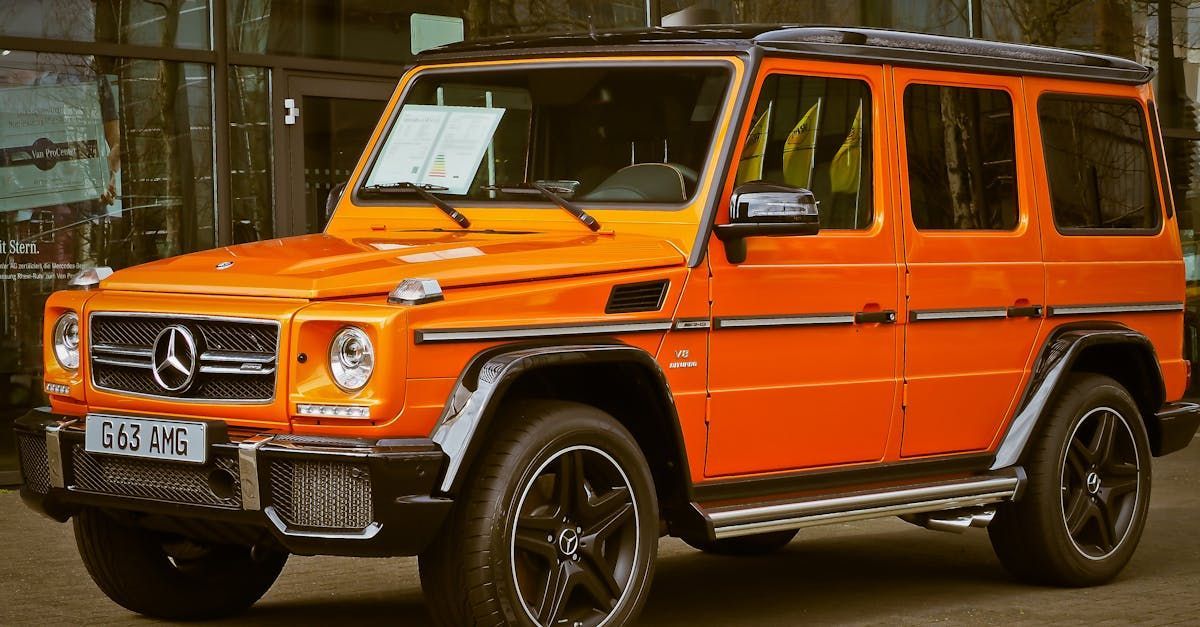Shipping a Wrapped Vehicle?
November 4, 2024
Here’s How to Keep Your Wrap Safe on the Road
Car wraps have become a big trend in recent years, and it’s easy to see why. Wrapped cars not only look amazing but also have practical benefits that can make a real difference. People wrap their cars for all sorts of reasons:
- Protection: A car wrap acts like a protective layer over the original paint, keeping it safe from minor scratches, chips, and the effects of sun and weather exposure.
- Branding: Many businesses use vehicle wraps to advertise their brand. It’s a mobile billboard that reaches thousands of people every day. These wraps often include logos, contact details, and eye-catching designs that make them stand out on the road.
- Aesthetics and Personalization: For car enthusiasts, a wrap is an easy, non-permanent way to give their vehicle a unique, custom look without changing the original paint. It’s like giving your car a personality boost!
But when it’s time to ship a wrapped vehicle, a little extra care goes a long way. Shipping itself can be tough on any car—exposure to weather, dust, road debris, and even the risk of minor scratches from tight spaces or rough handling. With a wrapped car, these risks become even more concerning. Wraps can peel, scratch, or fade more easily than standard paint, so a few extra steps can ensure your wrap looks just as good on arrival as it did when it left.
In this guide, we’ll go over some simple, effective tips for shipping a wrapped vehicle safely. Whether you’re transporting your wrapped car across the country or shipping it internationally, following these tips will help your wrap stay smooth, vibrant, and damage-free throughout the journey.
Understand the Risks: What Can Happen to Car Wraps During Shipping?
Shipping a wrapped car can expose it to a few risks, so understanding these can help you take steps to protect your vehicle’s look. While shipping companies are careful, wrapped cars have some specific vulnerabilities compared to unwrapped ones. Here are the most common issues that can occur:
- Scratches: Road debris, dust, or small rocks can get kicked up during transport, especially if your vehicle is on an open carrier. Even the wrap’s protective layer can get scratched or scuffed by this debris, affecting its appearance.
- Dents: Although rare, dents can happen if a vehicle isn’t properly secured, or in situations where it’s loaded or unloaded multiple times. Tight spaces on carriers, bumps in the road, or rough handling can sometimes lead to minor dents, which are especially noticeable on a wrap's smooth surface.
- Peeling: One of the biggest concerns with shipping a wrapped car is peeling. Long-distance travel, especially at high speeds on the back of a carrier, exposes the wrap to wind and constant vibration. Poorly applied wraps or older wraps may start to peel or bubble in these conditions, which can ruin the look of the wrap.
- Fading: Sun exposure is another risk, especially if your car is shipped on an open trailer. Long periods in direct sunlight can lead to fading, making the colors of your wrap look dull by the time it arrives. This can be a big issue for brightly colored wraps or branded wraps that need to stay vibrant.
These risks don’t mean that shipping a wrapped car is a bad idea—they just mean you’ll want to take some simple steps to protect it. Choosing the right shipping method, like enclosed transport, and preparing your car with some basic precautions can help keep these risks to a minimum, ensuring your wrap looks fresh and damage-free at its destination.
Choose the Right Shipping Method for Wrapped Cars
When it comes to shipping a wrapped vehicle, choosing the right transport method is one of the best ways to keep it safe. There are two main options to consider—enclosed shipping
and open transport—and each has its benefits and drawbacks.
Enclosed Shipping: Full Protection for Your Wrapped Car
Enclosed shipping is the safest option for wrapped cars. Your vehicle will be placed inside a closed trailer, fully protected from the elements. This means:
- No Exposure to Weather: Your car won’t have to deal with rain, snow, dust, or extreme sun exposure, all of which can affect a wrap's quality.
- Protection from Road Debris: Small rocks, dust, and other debris won’t be able to reach your car, keeping the wrap safe from scratches and damage.
Enclosed shipping is a great choice for high-value vehicles or cars with custom or branded wraps that need to arrive in perfect condition. It’s also ideal for long-distance transport or if the car is being shipped through areas with unpredictable weather.
Open Transport: A More Affordable Option with Some Risks
Open transport is a common method for car shipping and is usually less expensive than enclosed transport. However, since the vehicle is loaded onto an open-air trailer, it’s exposed to weather, road dust, and debris. Here are some pros and cons to consider:
- Pros: Open transport is usually more budget-friendly and widely available, so you’ll have more options and flexibility for scheduling.
- Cons: The wrap will be more vulnerable to dust, small rocks, and sun exposure, which can lead to minor scratches, fading, or even peeling over long distances.
If you go with open transport for a wrapped car, consider asking your transport company if they offer any extra precautions. Some carriers can add protective covers or use wrap-friendly materials to secure your car, which can help minimize potential damage.
Which Option Is Best for Your Wrap?
If your wrap is valuable, brand-new, or used for business branding, enclosed shipping is typically worth the investment.
While it may cost a little more upfront, the peace of mind and protection can be well worth it to avoid potential repair costs or the hassle of touching up a damaged wrap. However, if you’re looking for a more budget-friendly option and your wrap can handle a bit of exposure, open transport with extra precautions can also be a solid choice.
Prepare Your Wrapped Car for Shipping: Pre-Transport Checklist
Preparing your wrapped car for shipping can make a big difference in keeping it safe throughout the journey. Here’s a simple checklist to get your car ready and minimize the risk of damage to the wrap:
1. Clean the Vehicle
- Why Cleanliness Matters: Dirt and debris can act like sandpaper on your wrap during transport. Even a small layer of dust can lead to scratches or wear on the wrap, especially if the car is tightly strapped or exposed to the elements.
- How to Do It: Give your car a thorough wash before shipping, making sure to get into any tight spots where dust could build up. This will create a smooth, clean surface that’s better protected in transit.
2. Inspect for Pre-existing Damage
- Document the Current Condition: Carefully inspect the wrap for any existing scratches, peeling, or fading. Take clear, detailed photos from different angles so you have a record of the wrap’s condition before it’s loaded onto the carrier.
- Why This Helps: If any issues arise during transport, these photos serve as proof of your car’s original state. It’s helpful for both you and the transport company to have this documentation for reference, making it easier to address any concerns on delivery.
3. Inform the Transport Company
- Let Them Know It’s Wrapped: Not every car has a wrap, so it’s important to inform the transport company in advance. This allows them to take specific steps, like using wrap-friendly straps or offering extra protection if needed.
- Ask About Wrap Protection Options: Some companies may have extra services designed for wrapped cars, such as specialized covers or extra padding. By letting them know ahead of time, you can often take advantage of these wrap-protection options to minimize any risks.
These easy steps—cleaning, inspecting, and communicating with your transport provider—can go a long way toward making sure your car’s wrap arrives just as fresh and flawless as when it left. Taking a little time to prepare before shipping ensures a safer journey for your wrapped car.
Extra Protection Tips for Car Wraps in Transit
When shipping a wrapped car, a few extra protection steps can help keep the wrap looking perfect on arrival. Here are some effective ways to add a bit more security:
1. Consider a Temporary Protective Film
- Why Use a Protective Film: A clear, temporary film layer over your wrap can provide added security against scratches, small debris, and even weather exposure. This extra film is designed to peel off easily without damaging the wrap beneath.
- How It Works: Applying a protective film takes just a bit of extra time but can help absorb minor impacts, keeping the actual wrap free from scuffs or marks.
2. Use Wrap-friendly Wax or Sealant
- Extra Layer of Durability: Certain waxes or sealants made specifically for car wraps can add an additional layer of durability. They form a light barrier that resists dust, moisture, and UV exposure during transport.
- Application Tip: Make sure to use only wrap-safe products to avoid any potential damage to the wrap material. A quick application of wrap-friendly sealant can make a noticeable difference in protection.
3. Confirm Soft Straps with Your Transporter
- Why Soft Straps Matter: Traditional straps can be harsh on wrapped cars, sometimes causing scratches or marks if they shift during transit. Soft or wrap-friendly straps are designed to hold the car in place without the added risk.
- How to Request: When booking your transport, ask if the company can use soft straps, or let them know your vehicle is wrapped so they can make any necessary adjustments. Many transport companies are equipped with options for safely securing wrapped cars.
These small, practical steps—adding a temporary film, applying a wrap-safe sealant, and ensuring soft straps—can make a big difference in keeping your car’s wrap safe and looking brand new throughout the journey. Taking a little extra time to apply these protections ensures peace of mind during transport.
After Shipping: Inspecting Your Wrap Upon Arrival
Once your wrapped car arrives, a thorough inspection will help ensure it’s in the same condition as when it left. Here’s how to examine your vehicle and what steps to take if any issues come up:
1. Inspect the Vehicle Thoroughly
- Take Your Time: Walk around the entire car and examine the wrap closely. Look at it from different angles and lighting to catch any details you might miss with a quick glance.
- Use Photos as a Reference: If you took photos before shipping, now’s the time to compare them to see if there are any new issues with the wrap’s condition.
2. What to Look For
- Peeling or Bubbling: Check for any areas where the wrap might be lifting or bubbling, especially around edges or corners where wraps are most vulnerable.
- Scratches: Look for small scratches or scuffs, which can sometimes happen during transit.
- Fading or Discoloration: If the car was exposed to direct sunlight or weather, you may see signs of fading or discoloration, especially on brighter colors.
3. Communicate with the Shipping Company if There’s Damage
- Report Immediately: If you notice any damage, contact the shipping company as soon as possible. Quick reporting is often necessary to file a claim or request a resolution.
- Provide Evidence: Share the “before” and “after” photos to show the condition change clearly. Most companies are willing to work with you, especially with documented proof.
- Discuss Next Steps: Ask the shipping company about their process for handling wrap-related issues. Some may cover repairs or assist with touch-ups if the damage occurred during transit.
Taking these steps to inspect your wrap carefully and communicate any issues will ensure a smooth follow-up process and help keep your wrapped car looking as good as new.
Wrapping Up (Pun Intended!): Final Thoughts on Safe Shipping for Wrapped Cars
Shipping a wrapped car can seem daunting, but with the right preparation and knowledge, you can ensure your vehicle arrives at its destination in excellent condition. Here are some essential points to consider as you get ready for this process.
Reassurance Through Preparation
With the proper steps in place, you can confidently ship your wrapped vehicle without unnecessary stress. It’s crucial to understand that a well-prepared car is less likely to face issues during transit. By cleaning your vehicle, documenting its condition, and communicating with your transport company, you set yourself up for success.
Importance of Choosing a Trusted Transport Company
One of the most significant factors in ensuring the safe transport of your wrapped car is selecting a reliable shipping company. Here’s what to look for:
- Experience with Wrapped Vehicles: Make sure the transport company has experience handling wrapped cars specifically. They should understand the unique needs and potential risks associated with these vehicles.
- Positive Reviews and Reputation: Check online reviews and testimonials from previous customers. A company with a solid reputation for care and reliability is more likely to treat your car with the attention it deserves.
- Insurance Coverage: Ensure the company offers adequate insurance options. In the unlikely event of damage during shipping, you’ll want to know that your vehicle is covered.
Investing in Protective Measures
Taking additional protective measures is always a good idea. Here are a few ways to safeguard your wrap:
- Enclosed Transport: Whenever possible, opt for enclosed transport to shield your vehicle from weather and road debris. While it may cost more, the investment is worth it for valuable or custom-wrapped cars.
- Temporary Protective Films: Consider using a temporary protective film that can be applied over the wrap. This film helps prevent scratches and wear during transit while being easy to remove upon delivery.
- Wrap-Friendly Products: Using wrap-friendly waxes and sealants can help enhance the durability of the wrap, offering extra protection against the elements and daily wear.
Bonus Tips for Business Owners: Keeping Your Branded Wrap Perfect on the Road
For businesses using wrapped vehicles as part of their branding strategy, maintaining the quality of those wraps during transport is crucial. A well-kept wrap not only enhances your company’s image but also ensures that your branding stays visible and effective. Here are some valuable tips for business owners to help keep their branded wraps looking perfect while on the road.
1. Choose Your Routes Wisely
- Avoid Rough Terrain: When planning your transport routes, opt for smoother, well-maintained roads whenever possible. Rough or unpaved roads can lead to vibrations and impacts that might damage your wrap.
- Consider Seasonal Weather Conditions: Be mindful of the weather and choose routes that are less likely to expose your vehicle to harsh elements. For example, avoid transporting during heavy rain or snow, which can cause water damage or road debris to affect the wrap.
2. Schedule Transport During Off-Peak Times
- Minimize Traffic Stress: Transporting your wrapped vehicle during off-peak hours can help reduce the risk of accidents and minimize exposure to road debris. Less congestion means less likelihood of chips and scratches from other vehicles.
- Avoid Major Events or Construction Areas: Planning your transport to avoid major events or construction zones can help ensure a smoother journey, reducing the chances of unexpected delays and risks to your vehicle.
3. Use Proper Vehicle Covers
- Invest in Quality Covers: If your vehicle will be parked for any length of time during transport, consider using a breathable car cover designed specifically for wraps. This provides protection from dust, dirt, and UV exposure, which can lead to fading or wear over time.
- Secure the Cover Properly: Make sure the cover is fitted correctly to avoid any movement that could cause scratches while on the road.
4. Conduct Regular Maintenance Checks
- Pre-Transport Inspections: Before shipping, inspect the wrap for any signs of wear or damage. Address any issues, such as peeling or scratches, before they become bigger problems during transport.
- Post-Transport Follow-Ups: Once the vehicle arrives, perform a thorough inspection again. This ensures that any new damage can be addressed promptly, maintaining the integrity of your branding.
5. Communicate with Your Transport Provider
- Share Your Branding Goals: Let your transport company know that your vehicle is wrapped as part of your branding. They may have specific recommendations or services to protect the wrap better during transit.
- Ask for Special Considerations: Don’t hesitate to request special handling instructions. A good transport provider will be willing to accommodate your needs to ensure your vehicle arrives in perfect condition.
By implementing these bonus tips, business owners can effectively protect their branded wraps during transport, ensuring that their vehicles not only represent their brand well but also remain in top condition. Taking these precautions helps preserve the investment in your vehicle wrap and enhances your overall brand image on the road.














